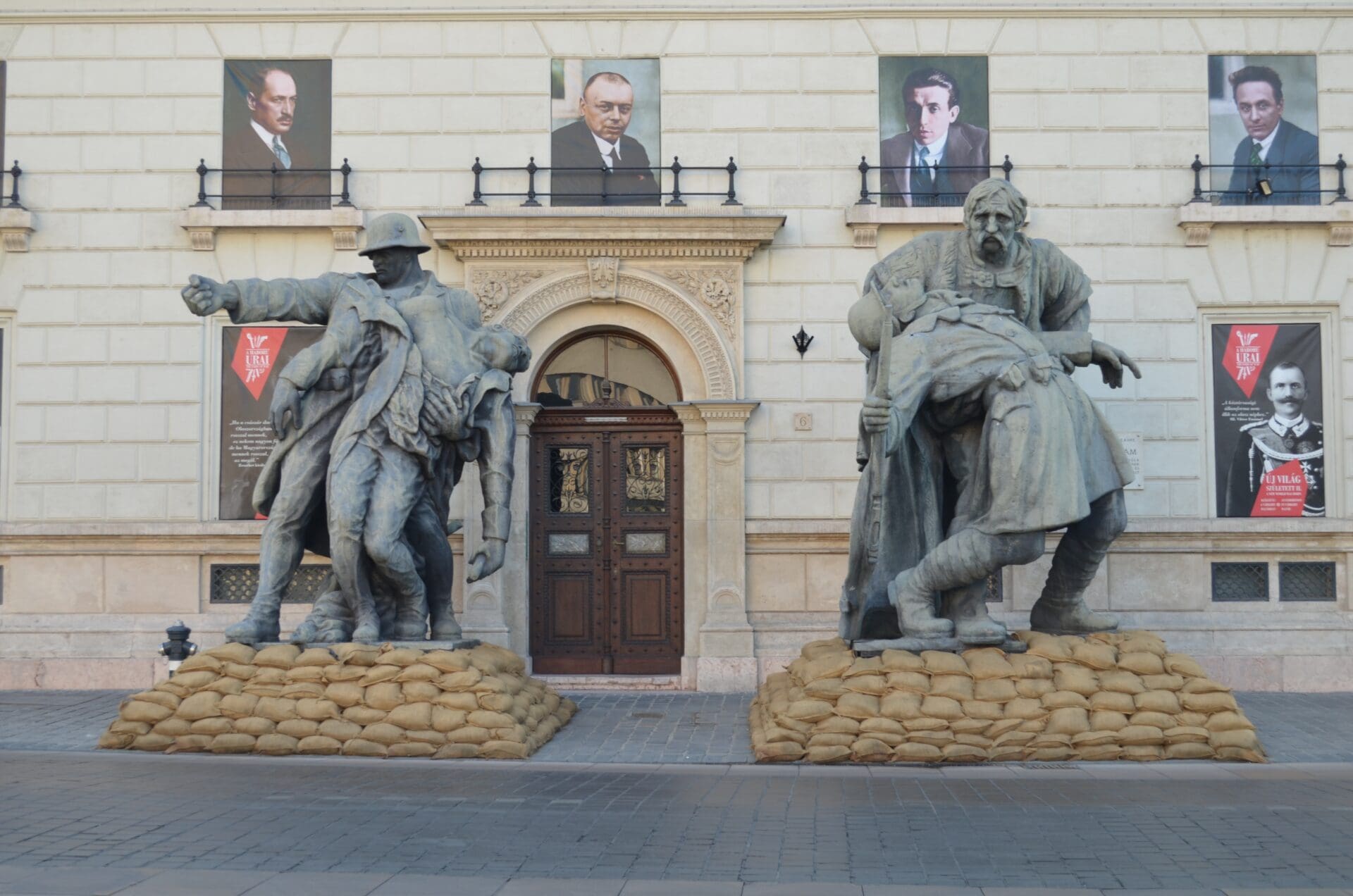As World War I protracted, the demise of the Astro-Hungarian Empire became inevitable. The Empire’s economy was devastated, the nation was suffering from economic hardship and people grew dissatisfied with rationing. Four years into the war, the social injustice that characterises all wars was also exposed— the vast majority of the 3.6 million men who had been mobilised as well as of the 661,000 Hungarians who perished in the war came from the poor agrarian population. As disenchantment with the war grew, the demand to pursue peace intensified. Count Mihály Károlyi who had gained national recognition with his 12 demands that aimed to serve Hungary’s independence and democratise the country, emerged as one of the leaders of the Hungarian National Council, an opposition initiative that consisted of anti-war parties that believed in the Wilsonian principles.
When the Hungarian government, after the admission that the war was lost, was forced to resign, people hoped that Hungary’s last king, Charles IV would appoint Count Mihály Károlyi prime minister. Despite the popular demand, however, not Károlyi but János Hadik became prime minister of Hungary. News about the formation of the Hadik-government quickly spread in the capital, fuelling general discontent. On the evening of the 29th and morning of the 30th people gathered spontaneously to protest the decision—soon, however, the protests escalated and turned into an uprising. Hadik was forced to resign at 3 a.m., only 17 hours after being appointed. In the meantime, armed workers and soldiers occupied public buildings, freed political prisoners and demanded Hungary’s democratisation, independence and the ending of the war as soon as possible.
Masses of people celebrated the victory of the revolution and Károlyi’s appointment
By 31 October, the revolution succeeded: honouring the main demand of the revolutionaries, Count Mihály Károlyi was appointed prime minister of Hungary. Masses of people celebrated the victory of the revolution and Károlyi’s appointment; soldiers removed the Astro-Hungarian symbols from their hats and replaced the despised K.u.K letters (kaiserlich und königlich or ‘imperial and royal’) with asters. The dissatisfied workers and soldiers revolting on 30 and 31 October 1918 became the face of the Revolution that is now known as the Aster Revolution or the Chrysanthemum Revolution. Following the news of the Revolution in Budapest, National Councils were formed all across Hungary that assisted the democratisation of the country in the first couple of weeks after the success of the Revolution. As a result of the Revolution and the tireless efforts of the National Councils, on 16 November 1918, Hungary was proclaimed a republic.
While many democratic reforms were achieved by the First Hungarian Republic, including the introduction of universal suffrage (also extended to females over 24 years of age who could read and write), the release of political prisoners and the guaranteeing of press freedom, the government fell short on delivering a thorough land reform and a peace treaty favourable for Hungary. On 20 March 1919, the government received new communication (the so-called Vix Note) about the peace treaty to be signed with Hungary: the country was demanded to surrender even more lands inhabited by ethnic Hungarians than originally agreed in the Armistice of Belgrade. Unable to accept the terms of the Note, and with their hands tied, the democratic government resigned. Soon, the competing political power, the strengthening Communists tricked their way into government and proclaimed the Socialist Federative Republic of Councils in Hungary on 21 March 1919, putting a violent end to Hungary’s first ever, short-lived democracy.








